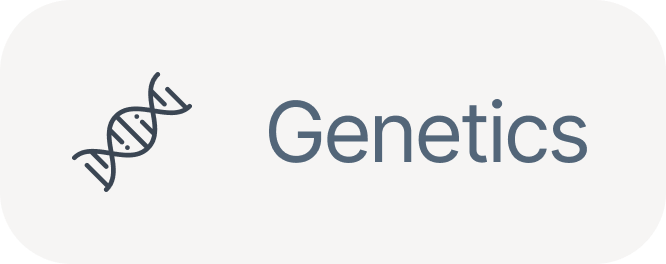Breakouts can range from mild to severe, and their impact goes beyond the skin—persistent acne often affects self-confidence and quality of life. They are typically diagnosed through visual examination, and treatment depends on the type and severity, often involving a combination of topical treatments, skincare adjustments, and lifestyle changes to manage and prevent further outbreaks.
Factors that can cause skin Breakouts:
Breakouts
The ingredients suggested on this page are based on scientific research and represent some of the most commonly used solutions for managing breakouts. While these ingredients are generally safe and effective for most individuals, we recommend consulting with a dermatologist for severe, persistent, or cystic acne to ensure the most appropriate treatment for your skin.





Read more
Breakouts refer to skin blemishes caused by clogged pores, often appearing as blackheads, whiteheads, pimples, or cystic acne. These occur when excess oil (sebum), dead skin cells, and bacteria accumulate in the pores, leading to inflammation and visible spots on the skin.
Treesirichod, Arucha, Natapong Thaneerat, and Watcharachai Kangvanskol. "A comparison of the efficacy and safety profiles of 10% salicylic acid and 10% urea creams in treating acanthosis nigricans in adolescents: a randomized double-blinded study." Archives of Dermatological Research 315.7 (2023): 2091-2097.
Salicylic Acid is a beta-hydroxy acid (BHA) known for its exfoliating and skin-renewing properties. It helps reduce pigmentation by penetrating deep into the skin and gently dissolving the bonds between dead skin cells on the surface. This exfoliation process removes the outermost layer of pigmented cells, revealing brighter, more even-toned skin underneath.
Salicylic acid is particularly effective for addressing post-inflammatory hyperpigmentation (PIH) caused by acne, as it not only fades dark spots but also prevents clogged pores that lead to breakouts. Its ability to reduce oil production and clear the skin makes it especially beneficial for oily or acne-prone skin types. With consistent use, salicylic acid promotes smoother, more radiant skin while gradually reducing visible pigmentation.
Salicylic acid is particularly effective for addressing post-inflammatory hyperpigmentation (PIH) caused by acne, as it not only fades dark spots but also prevents clogged pores that lead to breakouts. Its ability to reduce oil production and clear the skin makes it especially beneficial for oily or acne-prone skin types. With consistent use, salicylic acid promotes smoother, more radiant skin while gradually reducing visible pigmentation.
References:
See how Salicylic Acid also helps with
Zheng, Yue, et al. "Efficacy and safety of 2% supramolecular salicylic acid compared with 5% benzoyl peroxide/0.1% adapalene in the acne treatment: a randomized, split-face, open-label, single-center study." Cutaneous and ocular toxicology 38.1 (2019): 48-54
Leyden, James J., et al. "The efficacy and safety of a combination benzoyl peroxide/clindamycin topical gel compared with benzoyl peroxide alone and a benzoyl peroxide/erythromycin combination product." Journal of Cutaneous Medicine and Surgery: Incorporating Medical and Surgical Dermatology 5 (2001): 37-42.
Benzoyl peroxide is one of the most effective ingredients for treating inflammatory acne, including red, swollen pimples and pustules. It works by killing acne-causing bacteria (Propionibacterium acnes) and reducing inflammation in the skin. Additionally, it helps clear out clogged pores by breaking down dead skin cells and excess oil.
Benzoyl peroxide is particularly useful for moderate to severe breakouts and is often combined with other treatments to prevent bacteria from becoming resistant. It’s a go-to solution for inflamed, persistent acne. However, take care that Benzoyl peroxide can make your skin more vulnerable to UV exposure. Additionally, it has the ability to bleach cloth (towels, pillowcases, shirts, etc.) – so be careful while wearing BPO.
Benzoyl peroxide is particularly useful for moderate to severe breakouts and is often combined with other treatments to prevent bacteria from becoming resistant. It’s a go-to solution for inflamed, persistent acne. However, take care that Benzoyl peroxide can make your skin more vulnerable to UV exposure. Additionally, it has the ability to bleach cloth (towels, pillowcases, shirts, etc.) – so be careful while wearing BPO.
References:
Zasada, Malwina, Elzbieta Budzisz, and Anna Erkiert-Polguj. "A clinical anti-ageing comparative study of 0.3 and 0.5% retinol serums: A clinically controlled trial." Skin pharmacology and physiology 33.2 (2020): 102-116.
Retinol, a Vitamin A derivative, is a versatile ingredient that addresses several types of breakouts. It speeds up cell turnover, which helps prevent dead skin cells from clogging pores, making it effective for both non-inflammatory acne (like blackheads) and inflammatory acne (like pustules and cystic acne). Retinol also reduces excess oil production and helps fade acne scars over time. While it’s highly effective, retinol can initially cause some dryness or irritation, so it’s best introduced gradually into your routine.
References:
See how Retinol also helps with
Nyirady, R M Grossman, M Nighland, R S Berger, J L Jorizzo, Y H Kim, A G Martin, A G Pandya, K K Schulz, J S Strauss, J. (2001). A comparative trial of two retinoids commonly used in the treatment of acne vulgaris. Journal of Dermatological Treatment, 12(3), 149–157.
Lowe, Nicholas J., et al. "Azelaic acid 20% cream in the treatment of facial hyperpigmentation in darker-skinned patients." Clinical therapeutics 20.5 (1998): 945-959.
Azelaic acid is a multi-functional ingredient that targets both inflammatory and non-inflammatory breakouts. It works by reducing acne-causing bacteria and calming inflammation, making it especially helpful for red, swollen pimples. Additionally, it helps unclog pores and improves the skin’s texture. Azelaic acid is a great option for those with sensitive or combination skin because it is gentle yet effective. It also helps address post-inflammatory hyperpigmentation (PIH), fading dark spots left behind by breakouts.
References:
See how Azelaic Acid also helps with
Thiboutot D, Thieroff-Ekerdt R, Graupe K. Efficacy and safety of azelaic acid (15%) gel as a new treatment for papulopustular rosacea: results from two vehicle-controlled, randomized phase III studies. J Am Acad Dermatol. 2003; 48(6): 836-845.
Webster, Guy. "Combination azelaic acid therapy for acne vulgaris." Journal of the american academy of dermatology 43.2 (2000): S47-S50.
Bissett, D. L., Oblong, J. E., & Berge, C. A. (2006). Niacinamide: A B Vitamin that Improves Aging Facial Skin Appearance. Dermatologic Surgery, 31, 860–866.
Niacinamide, a form of Vitamin B3, is a powerhouse ingredient for managing breakouts while supporting overall skin health. It helps regulate sebum (oil) production, preventing pores from becoming clogged and reducing the likelihood of new breakouts. Its anti-inflammatory properties soothe redness and irritation caused by pimples.
Niacinamide is particularly effective for mild to moderate acne and is often used alongside stronger treatments to enhance skin barrier function and reduce irritation. It also helps fade acne scars and discoloration, promoting a clearer, more even complexion.
Niacinamide is particularly effective for mild to moderate acne and is often used alongside stronger treatments to enhance skin barrier function and reduce irritation. It also helps fade acne scars and discoloration, promoting a clearer, more even complexion.
References:
See how Niacinamide also helps with
Bissett, Donald L., John E. Oblong, and Cynthia A. Berge. "Niacinamide: AB vitamin that improves aging facial skin appearance." Dermatologic Surgery 31 (2005): 860-866.
Shalita, Alan R., et al. "Topical nicotinamide compared with clindamycin gel in the treatment of inelammatory acne vulgaris." International journal of dermatology 34.6 (1995): 434-437.
Check other categories






